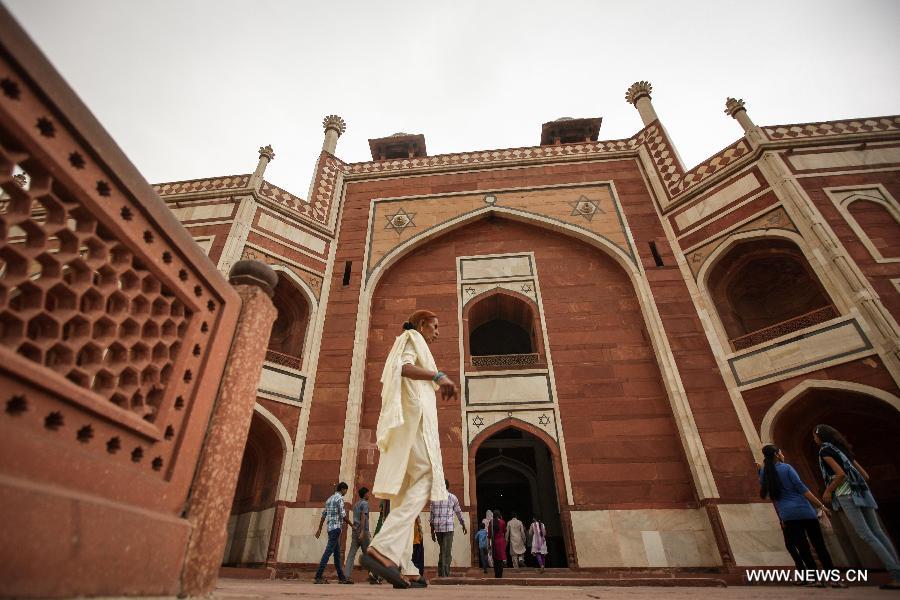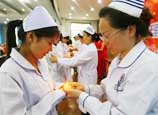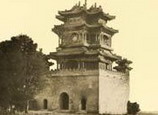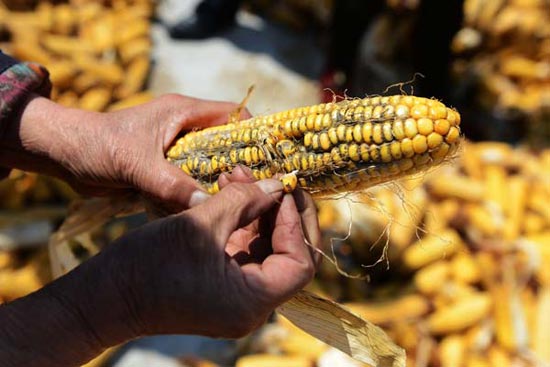
HUE, Vietnam, May 13 (Xinhua) -- Many relics found in Hue Imperial City were destroyed by wars and weather but in recent years,many temples and palaces have been restored to make the site as beautiful and as awe-inspiring as it was before.
This was what Nguyen Binh, a 54-year-old local guide, told members of the media during a tour of the World Cultural Heritage site in Thua Thien-Hue province in central Vietnam.
Having worked at the site of Hue Imperial City for over 30 years, Binh witnessed the degradation as well as restoration of the site over the past years.
"So far, the restoration work has done pretty well," Binh said.
Binh said that many collapsed walls and buildings have been rebuilt based on historical documents and measurements of remaining foundations.
At the meeting of the 17th session of the World Heritage Committee(WHC) in Columbia in 1993, the United Nations Educational, Scientific and Cultural Organization (UNESCO) recognized the Complex of Hue Monuments as a World Cultural Heritage, making Hue the first site in Vietnam to be included in the World Heritage List.
The Hue monuments have suffered considerably as a result of the passage of time, weather and wars. In 1947, a fire in the Imperial City and Forbidden Purple City destroyed nearly all the monuments.
The Vietnamese government has undertaken a series of restoration projects to bring the relics back to life, helping local people as well as tourists to know more about the magnificent beauty of the site as a whole in order to better understand and treasure the country's unique history.
Tran Thinh Quang, a 42-year-old tourist from northern Tuyen Quang province, who has visited the Hue Imperial City twice, shared the same view with Binh on the restoration of the site.
"About five years ago when I first visited the site, only few temples were intact while most of the relics were empty fields or just foundations left with explanatory plaques. But this time, many sites have been restored," Quang told Xinhua recently.
In late 2012, the Vietnamese government released some 800 billion Vietnamese dong (38.4 million U.S. dollars) for a restoration project of Hue's monuments for 2013-2020 period.
Hue served as the administrative center of southern Vietnam in the 17th and 18th centuries. Gia Long, first ruler of the Nguyen dynasty, made it the national capital of united Vietnam in 1802, a position that it held until 1945.
It was selected because it is geographically situated in the center of the country and with easy access to the sea.
The capital was planned in accordance with ancient oriental philosophy in general and Vietnamese tradition in particular. It also respected the physical conditions of the site, especially the Perfume River and Ngu Binh Mountain (known as the Royal Screen).
Four citadels or defended enclosures made up the city, including Capital City for official administrative buildings, Imperial City for royal palaces and shrines, Forbidden Purple City for the royal residences, and Tran Binh Bastion (Fish's Gill Bastion), an additional defensive work in the north-east corner of the Capital City, designed to control movement of the river.
The Imperial City and Forbidden Purple City are known collectively as the Inner City.
The palaces within the Inner City are similar in style and design, set on a raised podium, with wooden trusses, usually ironwood, gilded and painted pillars and rafters, brick walls, and roofs of yellow or blue-glazed cylindrical tiles. Roof edges are straight, and the decoration, both internally and externally, is abundant.
Hue is known not only for its unique style of architecture but is also a spiritual center where Buddhism and Confucianism have been mixed with local traditions.


















![]()
